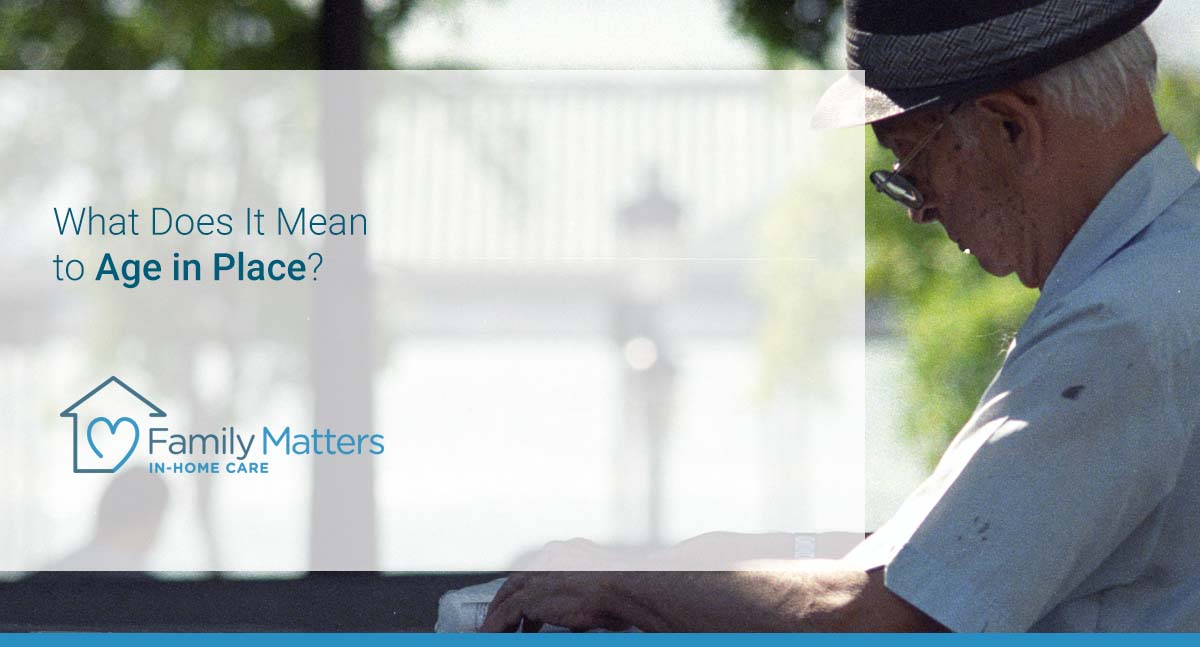
What Does It Mean to Age in Place?
Life is undoubtedly a myriad of milestones. Every new season comes with challenges and choices to make.
After retirement, one of the biggest questions facing many people is whether or not they are looking to age in place. The decision is based on many factors, such as an individual’s health, proximity to family, and preferences.
While wanting to retain independence is a major element in post-retirement living plans, it’s important to understand what it entails. What does it mean to age in place?
The Broad Definition of Aging in Place
When a person decides to age in place, they remain home or in the residence of their choice for as long as possible. Instead of transitioning to an assisted living community, seniors aging in place bring any necessary services into their homes.
These services are designed to help the individual maintain a high quality of life every step of the way. They may be health-related services or could simply provide support for carrying out daily tasks successfully. It’s to be expected that the types of services a person aging in place receives will change and adjust as time goes by.
The Many Benefits of Aging in Place
Those looking at what does it mean to age in place should always take time to consider the many benefits this option provides. Aging in place can mean maintaining a sense of independence even when support is required.
Over time, physical changes and limitations happen to everyone. The same can be said for cognitive changes experienced as a person grows older. Fortunately, we do not need to overlook or neglect these factors when considering the greater question of what does it mean to age in place.
Sure, living in your residence well into your golden years comes with some challenges. Aging in place requires significant planning and support that takes age-related decline into account at every turn. However, aging in place is also a process involving the help and support of close friends, family, and professional caregivers.
Daily routines, activities, and life decisions still rest with the person who has decided to age in place. There’s a sense of normalcy in this that can help a person maintain a strong sense of independence.
Along with those constants, aging in place comes with the assistance necessary to carry out physical tasks that could be difficult in this season of life. Receiving help in a familiar setting can make a huge difference in how a person views the aging process.
There’s a quality of life factor that shouldn’t be underestimated when understanding what does it mean to age in place. Many people are happier being in their own homes as opposed to assisted living or nursing communities.
A sense of familiarity and comfort can go a long way towards keeping an aging individual healthy. On a physical level, remaining in the home reduces the chances of acquiring viruses or diseases often spread through larger living communities. On a personal level, a sense of contentment with one’s surroundings can improve mood, mental health, and an overall positive outlook on life.
We can’t neglect to mention the cost of remaining in your personal residence when explaining what does it mean to age in place? Compared to assisted living communities and nursing homes, families can save thousands each year when they opt to have caretakers come into a home instead of transition out.
That’s not to say that aging in place is free. There are some costs to consider, such as home modifications for safety and increasing caretaker presences as an individual’s needs change. However, this is typically a fraction of what it costs to receive care in a facility full-time.
Challenges to Consider
There’s no way to avoid aging. That makes considering the benefits and risks of aging in place early on that much more important. For all of the benefits this lifestyle provides, there are some risks involved, as well.
One of the most common concerns with the concept of aging in place is the risk of falls and slips. Typically, caretakers aren’t in the home 24/7, and there’s always a chance that injury could occur when the resident is home alone.
Many people also worry about their ability to get where they need to go when driving is no longer an option. While assisted living communities often provide transportation for residents, those aging in place need to create a plan for getting to appointments and running errands on their own time.
The idea of isolation is also a fear that keeps many people from aging in place. While there’s a great sense of independence to be enjoyed in one’s own home, feeling distanced from others can counteract that happiness to a certain degree.
If you or your family member is considering in-home care as part of a plan to age in place, contact Family Matters In-Home Care today for a free consultation. Our team is dedicated to supporting your family and helping older adults enjoy life in the comfort of their own home for as long as possible.
Some of the services offered by Family Matter In-Home Care include: Alzheimer’s & Dementia Care, Bed & Wheelchair Transfer Assistance, Companionship, Housekeeping & Meal Preparation, Personal Care, Recovery Care, and Transportation.
Serving the San Francisco Bay Area and Greater San Diego, Family Matter In-Home Care has offices throughout California including: Campbell, CA, Roseville, CA, San Marcos, CA, and San Mateo, CA.
